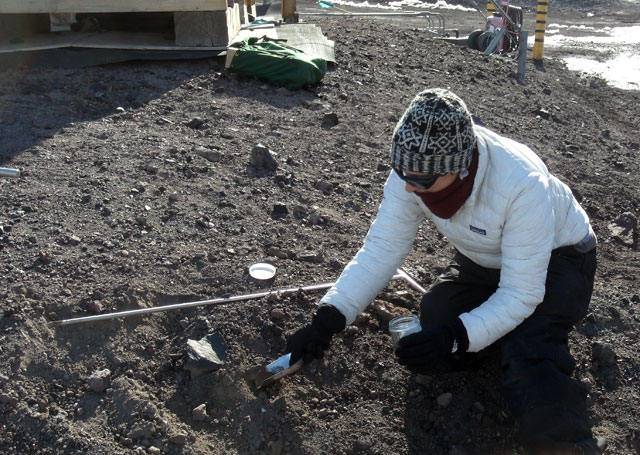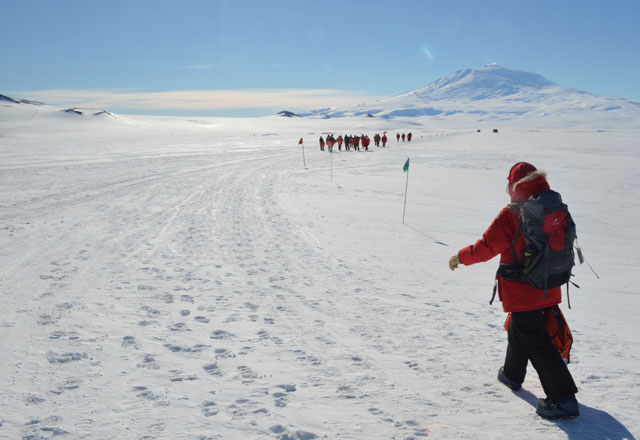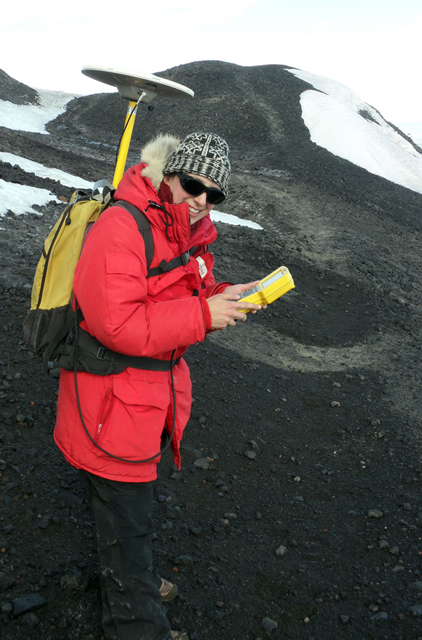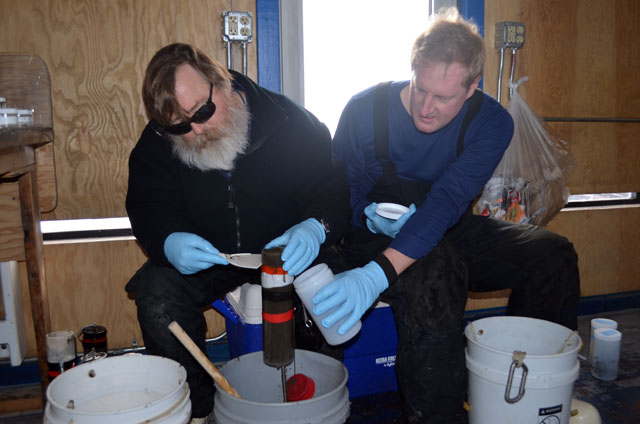|
Remote assignmentMiddle school teacher heads to the end of the world for science educationPosted March 9, 2012
On Nov. 9, I stepped away from my eighth-grade classroom at O. Henry Middle School My initial impressions of Antarctica were striking. Stepping onto the ice from the belly of a huge military cargo plane, I was hit with a blast of cold air and blinding light. To the north and east were hundreds of miles of sea ice, to the south and west were snow-covered mountains. My adventure had begun. As we left behind the sea ice and drove into McMurdo Station, the landscape grew more familiar. Dirt roads, vehicles and buildings made McMurdo feel more like a small mining town than an isolated research station. Robert F. Scott and his men first built on Antarctic soil in 1902, when they erected a shelter called Discovery Hut. It wasn’t until 1955 when the U.S. Naval Air Force constructed a base near the hut that McMurdo Station was established. Over the years, the station grew, and humans altered the environment around them. Unusable goods such as oil drums and derelict vehicles were dumped into the icy waters of McMurdo Sound, landfills were added as more waste was produced, and untreated sewage flowed out into McMurdo Sound. The Antarctic Treaty System Instead of dumping trash into landfills at McMurdo, waste is carefully sorted and shipped back to the United States. In 2001, a sewage treatment plant was established and now only treated water is pumped back into the sea. There are strict protocols on avoiding and cleaning up fuel and chemical spills, and wind turbines were recently installed to lower fuel dependency for power. To help ensure McMurdo is not reversing course, a research team from Texas A&M University We began by collecting sediment samples on the seafloor where debris and sewage have affected the ecosystem. To access the seafloor, we used a large machine to drill a dive hole through the six-foot-thick sea ice. A dive hut was dragged over the hole to allow divers to stay warm and keep the hole from freezing shut. 
Photo Credit: Terry Palmer
PolarTREC Teacher Michelle Brown scoops up soil samples to be analyzed for pollutants.
Terry Palmer We also collected sediment samples nine miles north of McMurdo Station at Turtle Rock. As we approached the sampling site, I noticed large dark shapes dotting the ice. About 50 Weddell seals, mostly mothers nursing their pups, greeted us. I was mesmerized by the seals and sat for hours watching them bask in the sun and listening to their grunts and strange creaking noises. After our team collected sediment samples from the seafloor, we moved onto land. A computer program randomly selected sampling locations around McMurdo Station, including areas that had a higher likelihood of chemical or fuel spills. Andrew Klein Our research team needed to collect sediment samples away from McMurdo Station to compare our results. We took a helicopter to Cape Bird, which sits on the opposite side of Ross Island, about 35 miles north of McMurdo Station. We passed by Mount Erebus, an active volcano, and miles of pristine ice to land on a rocky coast that had a strange and distinct mottled appearance. The Cape Bird penguin rookery is occupied by about 35,000 pairs of breeding Adélie penguins. We collected sediment samples away from the rookery and spent the afternoon watching penguins. The short, sometimes clumsy birds would walk right by me as they traveled from their nests into the ocean. After our sampling work was done, the Texas A&M group prepared for their return to Texas. I prepared for my next adventure: traveling to the South Pole and a remote field site.1 2 Next |



For USAP Participants |
For The Public |
For Researchers and EducatorsContact UsNational Science FoundationOffice of Polar Programs Geosciences Directorate 2415 Eisenhower Avenue, Suite W7100 Alexandria, VA 22314 Sign up for the NSF Office of Polar Programs newsletter and events. Feedback Form |





